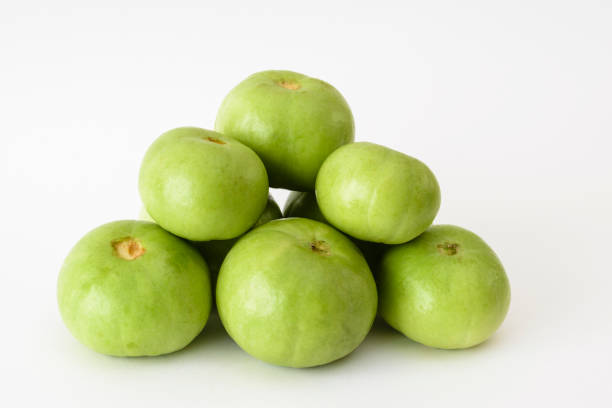

Benincasa fistulosa (Stocks) H.Schaef. & S.S.Renner
|
It is commonly known as Tinda and belongs to the family Cucurbitaceae.The mature fruit is eaten as vegetable which is used in cooking a variety of Indian dishes such as kootu, curry, sabzi and dal. It has high water content which imparts a cooling effect to the body. It is a rich source of phytoconstituents like phenolic compounds, flavonoids, tannins, saponins, cardiac glycosides, and terpenoids that have antioxidative property and act as free radical scavengers. Mode of Consumption : Boiled and cooked |
| Plant Details | Agro-climatic Zone | Vernacular Names | Pictures |
| Scientific Name: Benincasa fistulosa (Stocks) H.Schaef. & S.S.Renner Family: Cucurbitaceae Juss. Class: Magnoliopsida Order: Cucurbitales Genus: Benincasa Savi Fruiting Season: November to February Parts: Fruit |
|
Maharashtra : Dhemase, Bimbi, Kondvalli, Tendli Punjab : Tinda Rajasthan : Tindsi Uttar Pradesh : Tinda |
 Fruit |
| Compound/Extract | Activity | Mode of Action | Marker/References |
| Lectin | Anti-tumor | Zymogram studies revealed that purified lectin and Cisplatin preferentially decreased the Matrix metalloproteinase (MMP) MMP-2 activity compared to MMP-9. The decrease in the microvascular density (MVD), vascular endothelial growth factor (VEGF) level, and MMP's activity provide strong evidence that purified lectin has strong anti-angiogenic potential as that of the standard chemotherapeutic drug Cisplatin. | MMP-2, MMP-9, MVD, and VEGF[1] |
| Lectin of fruit sap | Anticancer | The lectin treatment, identified from the fruit sap, resulted in tumor growth inhibition and increased the life-span of the EAC, cancer bearing mice, without showing any detectable side effects. The lectin exhibits its potential role against cancer development by decreasing VEGF secretion and inhibiting the expression of MMP2 and MMP9. | VEGF, MMP2, and MMP[2] |
| Major Class | Metabolites (Content of bioactives: mg/100g Fresh Weight) |
| Effect | Observation | DOI |
| Disease | Formulation | Reference | Author | TKDL |
| Information from Wealth of India | Reference |
| 4.2, 04.2.1, 04.2.1.1, 04.2.1.3, 04.2.2, 04.2.2.3, 04.2.2.5, 04.2.2.6, 04.2.2.8 |
| CSIR-North East Institute of Science and Technology, Jorhat-6, Assam, India
CSIR-Institute of Himalayan Bioresource Technology, Palampur-61,Himachal Pradesh, India |